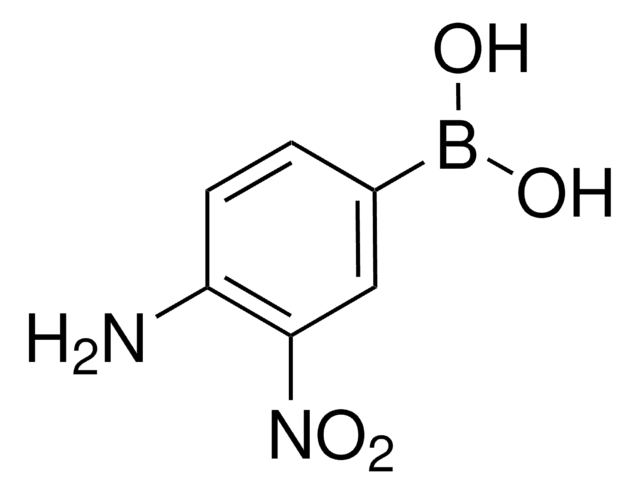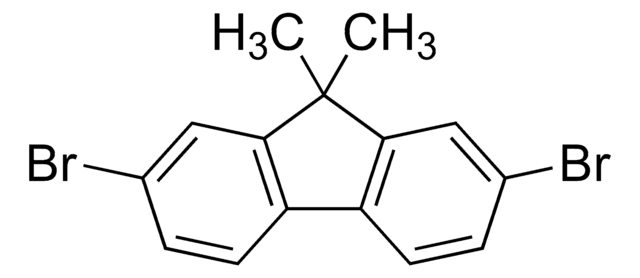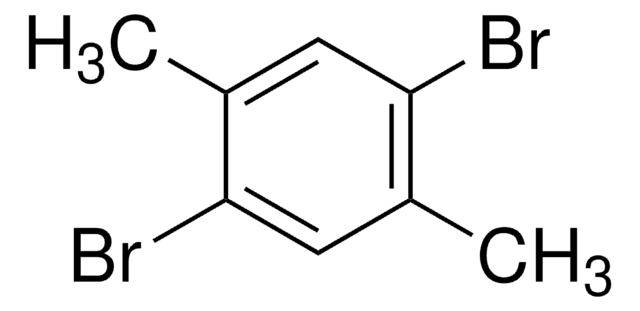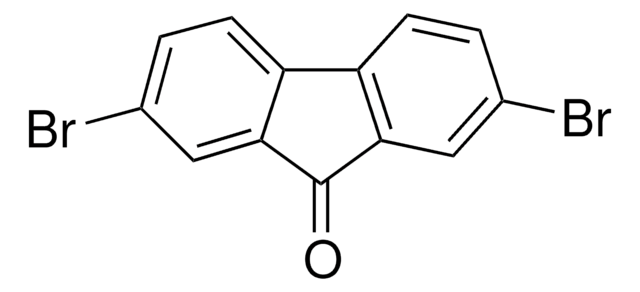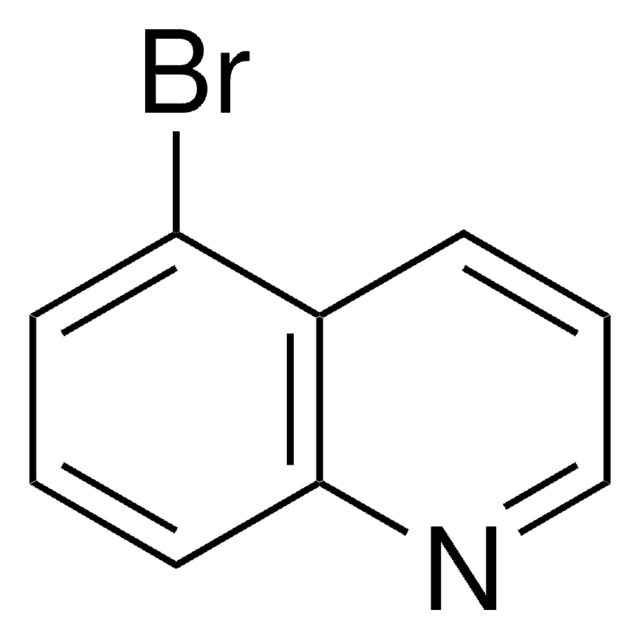All Photos(3)
About This Item
Empirical Formula (Hill Notation):
C25H14Br2
CAS Number:
Molecular Weight:
474.19
MDL number:
UNSPSC Code:
12352103
PubChem Substance ID:
NACRES:
NA.23
Recommended Products
Assay
95%
form
solid
mp
334-336 °C
SMILES string
Brc1ccc2-c3ccc(Br)cc3C4(c5ccccc5-c6ccccc46)c2c1
InChI
1S/C25H14Br2/c26-15-9-11-19-20-12-10-16(27)14-24(20)25(23(19)13-15)21-7-3-1-5-17(21)18-6-2-4-8-22(18)25/h1-14H
InChI key
UPJLZKCEPFAKSH-UHFFFAOYSA-N
General description
2,7-Dibromo-9,9′-spirobifluorene is a 9,9 substituted poly(2,7-fluorene) that is synthesized from 2,7-dribromo-9-fluorenone by reacting with a Grignard reagent of 2-bromobiphenyl. It has high photoluminescence and electroluminescent quantum efficiency that make it useful in the development of organic electronic devices.
Application
2,7-Dibromo-9,9′-spirobifluorene can be used in the preparation of 9,9′-spirobifluorene-based small molecules, which can further be utilized as host materials in organic light emitting diodes (OLEDs).
Storage Class Code
11 - Combustible Solids
WGK
WGK 3
Flash Point(F)
Not applicable
Flash Point(C)
Not applicable
Certificates of Analysis (COA)
Search for Certificates of Analysis (COA) by entering the products Lot/Batch Number. Lot and Batch Numbers can be found on a product’s label following the words ‘Lot’ or ‘Batch’.
Already Own This Product?
Find documentation for the products that you have recently purchased in the Document Library.
Syntheses and spectroscopic studies of spirobifluorene-bridged bipolar systems; photoinduced electron transfer reactions
Chien Y, et al.
Chemical Communications (Cambridge, England), 2874-2875 (2002)
Spiro-Functionalized Polyfluorene Derivatives as Blue Light-Emitting Materials
Yu W-L, et al.
Advanced Materials, 12(11), 828-831 (2000)
Tri-, tetra-and pentamers of 9, 9?-spirobifluorenes through full ortho-linkage: High triplet-energy pure hydrocarbon host for blue phosphorescent emitter
Fan C, et al.
Organic Letters, 12(24), 5648-5651 (2010)
Shugo Sakaguchi et al.
The journal of physical chemistry. B, 122(36), 8614-8623 (2018-08-23)
Nanostructures composed of conjugated polymers or π-conjugated molecules provide sensing platforms with large specific surface areas. One of the feasible approaches to accessing such nanostructured miniaturized sensors with ultrahigh sensitivity is to develop a network of organic nanowires with optical/electronic
Our team of scientists has experience in all areas of research including Life Science, Material Science, Chemical Synthesis, Chromatography, Analytical and many others.
Contact Technical Service